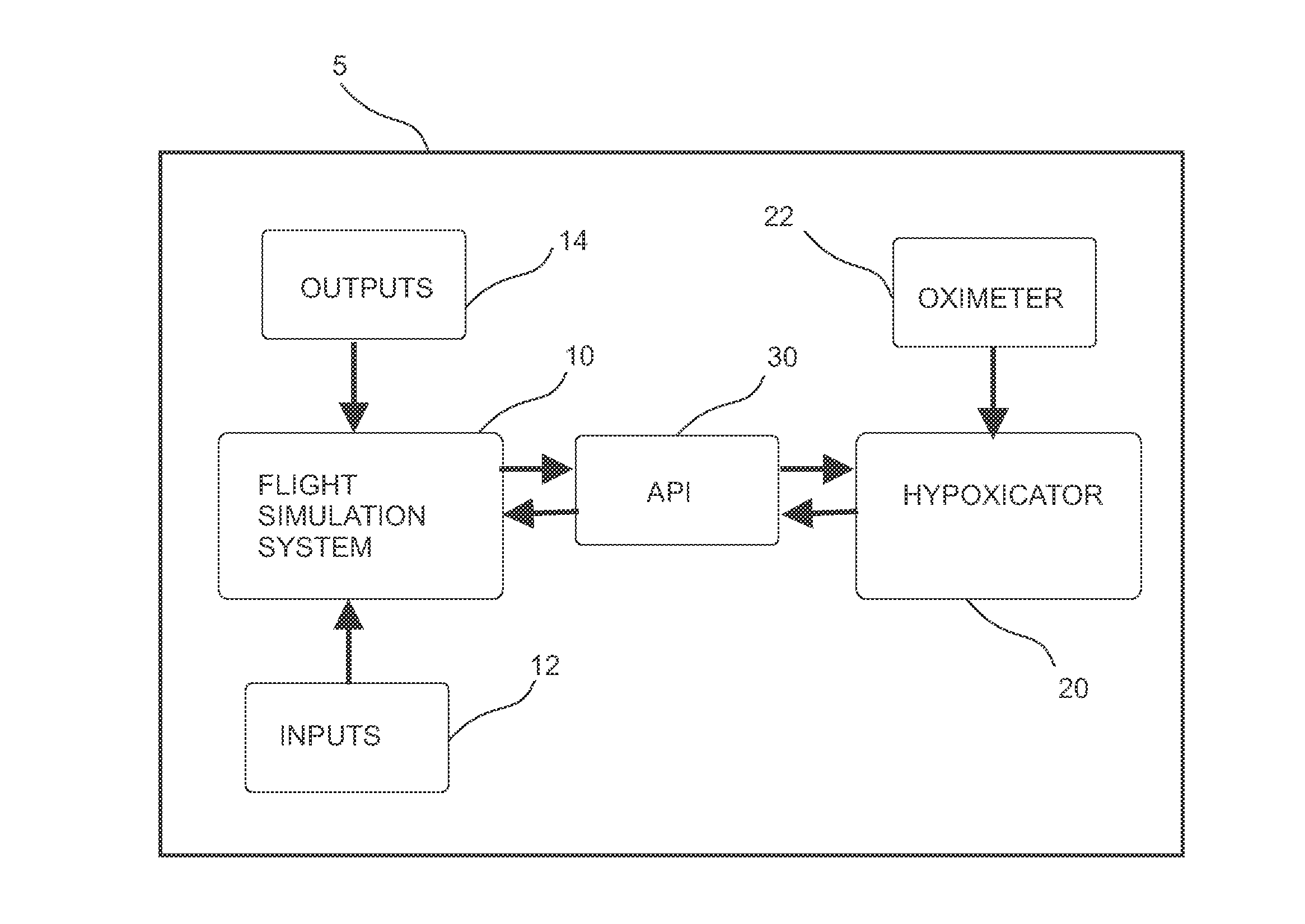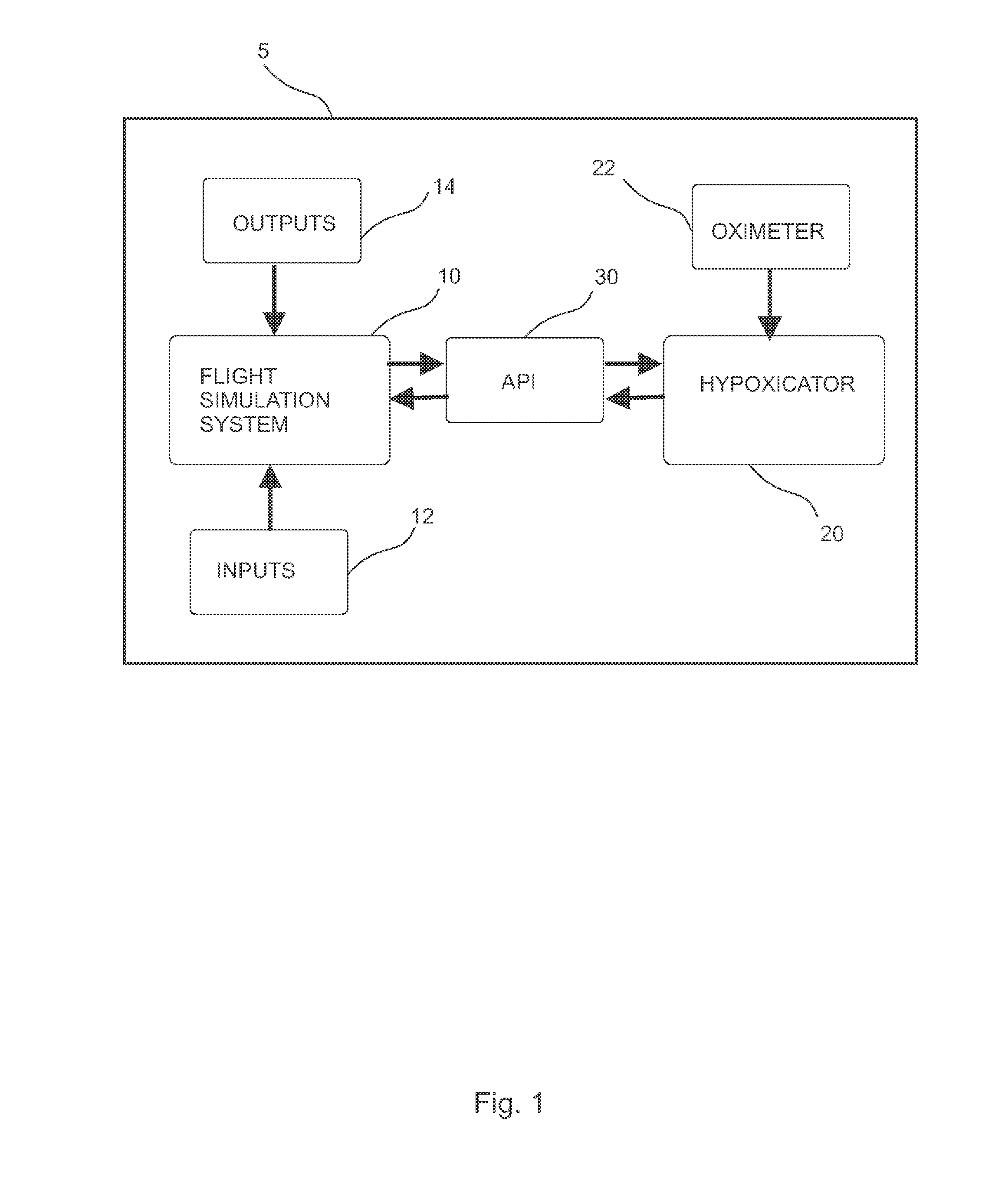Flight training system
- Summary
- Abstract
- Description
- Claims
- Application Information
AI Technical Summary
Benefits of technology
Problems solved by technology
Method used
Image
Examples
example 1
Training Session Incorporating System Comprising Microsoft Flight Simulator X Operably Linked to GO2Altitude Normobaric Hypoxicator
[0078]The subject receives a standard briefing on the effects of simulated altitude, nature of hypoxia, and all measurements and monitoring to be taken. He is briefed on the potential hazards of simulated altitude exposure and hypoxia and conditions which would exclude him undertaking the actual hypoxia exposure.
[0079]The subject gives written informed consent after receiving verbal and written information on the study design, risks, and voluntary nature of participation.
[0080]Induction of hypoxia is achieved by a GO2Altitude® hypoxicator which simulates exposure to 25,000 ft limited to 5 minutes, with rapid recovery effected by breathing oxygen.
[0081]The subject is supervised at all times by a physician or MICA attendant, ACLS accredited. Subject has baseline measures in a normoxic normobaric environment, SpO2 by pulse oximetry, heart rate, respiratory ...
example 2
Flight Simulator Integration Code
[0088]The following code is for the implementation on the present invention within the context of Microsoft Flight Simulator.
using System;using System.Collections.Generic;using System.Linq;using System.Text;using System.Net;using System.Net.Sockets;namespace ConsoleSocketListener{class Program{public enum BiofeedbackParameter{HeartBeat,ArterialOxygen,VentillatoryFrequency,ECG,BloodPressure}static bool _isAborted; / / / / / / Converts the passed in altitude value (given in meters)into / / / the level of oxygen that physiologically simulates thisaltitude. / / / static double ConvertAltitudeToOxygenPercent( doublealtitude_meters ){ / / 1.validate the passed in altitude to be withinreasonable / / limits (determined by the conversion table) / / 2.use a lookup table to convert the given value intothe required / / oxygen levelreturn −1;} / / / / / / Instructs the GO2Altitude Hypoxicator to supply thegiven oxygen concentration / / / to the subject to provide physiological altitudesimul...
example 3
System Including Application Programming Interface
[0089]Reference is made to FIG. 1 showing the flow of information between a flight simulator system and a hypoxicator. In particular, the exemplary system 5 comprises a processor-based flight simulator 10 having inputs 12 (including a joy stick, throttle, brakes and the like) and outputs 14 (including a visual display unit, instrument cluster and the like), a normobaric hypoxicator 20 for delivering an oxygen-depleted gas to the simulation pilot (not shown), having an oximeter 22 for measuring the oxygen saturation of the pilot's blood, and an application programming interface 30 for translating protocol instructions from the flight simulator 10 into a form which is readable by the hypoxicator 20.
PUM
 Login to View More
Login to View More Abstract
Description
Claims
Application Information
 Login to View More
Login to View More - R&D
- Intellectual Property
- Life Sciences
- Materials
- Tech Scout
- Unparalleled Data Quality
- Higher Quality Content
- 60% Fewer Hallucinations
Browse by: Latest US Patents, China's latest patents, Technical Efficacy Thesaurus, Application Domain, Technology Topic, Popular Technical Reports.
© 2025 PatSnap. All rights reserved.Legal|Privacy policy|Modern Slavery Act Transparency Statement|Sitemap|About US| Contact US: help@patsnap.com


